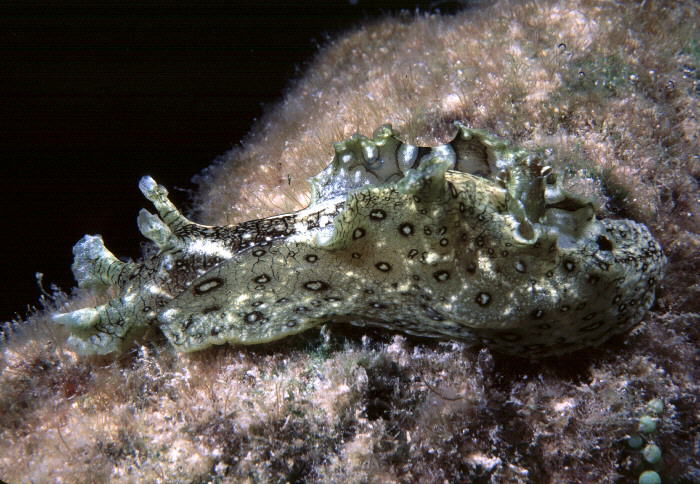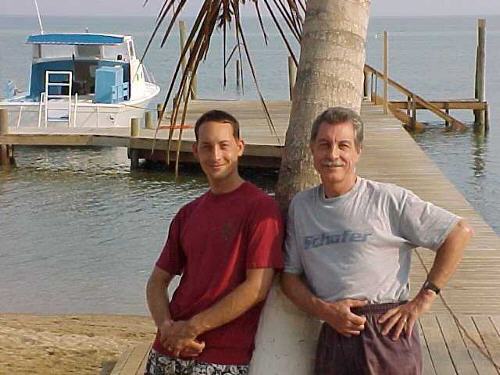 |
Appropriately referred to in the vernacular as - the Spotted Sea Hare, this species of Anaspidean has worldwide, circum-tropical distribution. One of the many species deriving the common name from the rabbit-like appearance of this sea slug, the rhinophores suggesting long ears, it is possibly the easiest of the Sea Hares to identify, having large black rings inside and out on the mantle folds.
Variation in coloration and thickness of its black lines and rings can be seen on Bill Rudman's Sea Slug Forum. A large sea slug, it may reach 16 cm in length and weigh 300 gms. Rudman notes that the body of this species is thicker and firmer, almost leathery, than most species of Aplysia. This species too, is one that defensively releases a purple "ink" when disturbed.
The specimen shown here was discovered while my son Mike and I were snorkeling within the fringing reef, just offshore of the Bay Islands Bearch Resort on Roatan, one of Honduras's Bay Islands.
As indicated throughout the literature all Aplysia's our herbivores. Aplysia dactylomela is common in intertidal "tidepools", and shallow waters where algal densities are greatest. Areas such as the warm, shallow flats protected by the fringing reef of Roatan are perfect for lush, healthy plant growth, where this species was feeding on Udotea, Rhinocephalus, Caulerpa, Penicillus and Halimeda.
While I wouldn't recommend this species of "bunny" as an Easter gift for your child or grandchild, you must admit that those cute little eye spots give this slug that warm snuggly look. Yeah, right!!!
BOW Photo and Text courtesy of Dave and Mike Behrens
Mike and Dave photo compliments of Frank Sebenius

| Michael and Dave Behrens, supported by coconut palm, on the beach of Bay Islands Beach Resort, base camp for their current studies of the coral reef animals of the Honduran Barrier Reef, the world's second largest barrier reef. Mike currently wears two hats, one as a field biologist for TENERA Corporation working at Diablo Canyon Nuclear Power Plant in San Luis Obispo, California, and is a graduate student in the doctoral program in Marine Sciences at University of California at Santa Barbara. Dave is a familiar face on this site and needs no introduction. Their work on Roatan includes photo documentation of the marine invertebrates of Roatan, publication of a Coral Reef Identification guide for this reef system and the development of a snorkeling trail at the Bay Islands resort. |
